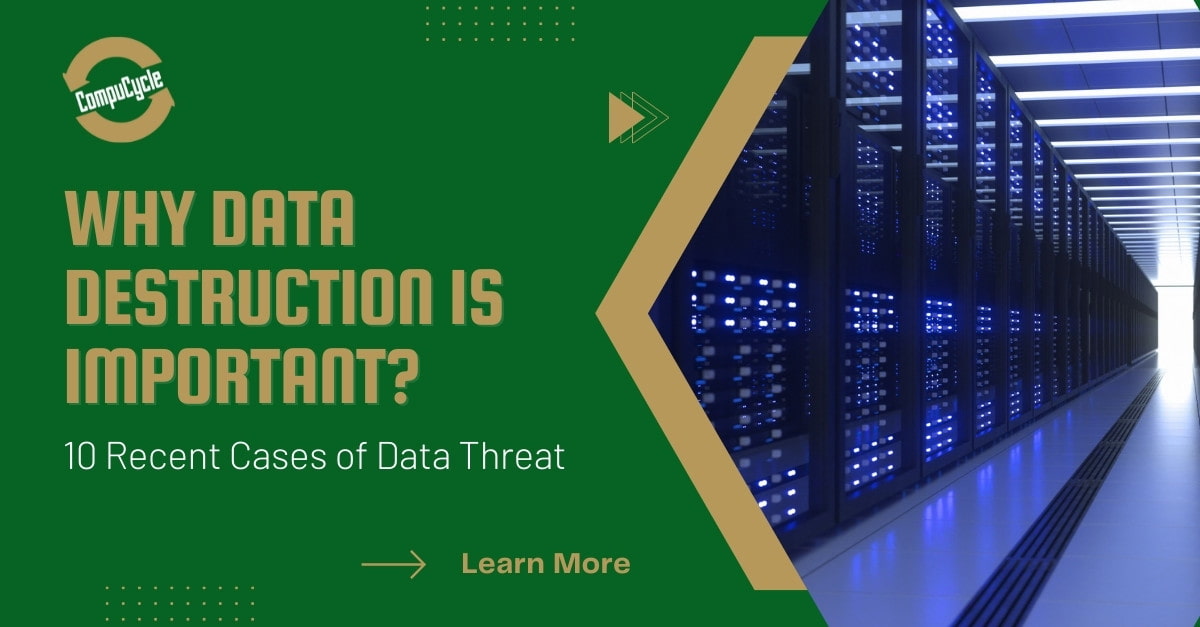How Proper Information Destruction Adds to Robust Computer System Safety And Security Providers and Mitigates Dangers of Information Violations
In today's electronic landscape, the relevance of proper information destruction can not be overemphasized, as it serves as a basic element of thorough computer system safety and security services. The implications of insufficient information devastation prolong past plain compliance; they can exceptionally influence an organization's cybersecurity stance and track record.
Importance of Information Damage
In today's electronic landscape, the importance of data destruction can not be overemphasized. As companies significantly depend on electronic properties, the possible dangers connected with data breaches and unauthorized access enhance. Effective data destruction is a critical element of an extensive information safety and security technique, securing sensitive info from falling into the hands of malicious actors.
When data is no more required, simply deleting data or formatting hard disk drives wants. Residual data can commonly be recouped making use of conveniently offered tools, positioning substantial risks to both people and companies. This highlights the necessity for durable information destruction techniques that ensure all data is irretrievably eliminated.
In addition, governing conformity mandates, such as GDPR and HIPAA, highlight the commitment to protect delicate information, including its proper disposal. Non-compliance can cause severe monetary fines and lawful repercussions. data destruction. Thus, integrating effective information destruction methods not only enhances security yet also strengthens an organization's track record and credibility

Approaches of Secure Information Erasure
Several effective approaches of protected data erasure can be used to make certain that sensitive details is completely gotten rid of from storage devices. One commonly recognized technique is data overwriting, which involves replacing existing information with random patterns numerous times. This technique significantly minimizes the opportunities of data healing, although it may not be efficient against sophisticated forensic techniques.

Physical devastation is additionally a trusted technique, where storage space devices are rendered unusable with shredding, crushing, or incineration. This technique ensures that data can not be recovered whatsoever yet calls for careful handling of harmful products.
Finally, specialized software devices created for protected information erasure provide performances that follow numerous erasure criteria. These devices usually include attributes like verification procedures to validate successful data devastation.
Employing these approaches in mix can enhance data protection and minimize the threats connected with information breaches, guaranteeing that sensitive information is not inadvertently subjected.
Legal and Compliance Considerations
The approaches used for safe and secure information erasure not only serve to protect delicate details however additionally needs to align with lawful and conformity frameworks governing information defense. Organizations are needed to comply with different regulations, such as the General Data Protection Law (GDPR), the Medical Insurance Portability and Accountability Act (HIPAA), and the Repayment Card Sector Data Safety And Security Criterion (PCI DSS) These regulations mandate certain procedures for data handling and devastation, making sure that delicate and individual data is irretrievably erased when no longer required.
Failing to follow these lawful requirements can result in significant penalties, including penalties and reputational damages. Furthermore, organizations must preserve documents of information damage processes, demonstrating compliance during audits or investigations. This documentation not just shields against lawful consequences article source but additionally enhances trust with consumers and stakeholders, showcasing a dedication to information safety.
Including legal and compliance considerations into data devastation practices is necessary for any organization. It decreases the danger of data breaches and illustrates a positive method to safeguarding delicate information, inevitably promoting a society of security and responsibility across the company.
Influence On Cybersecurity Position
Effective data destruction significantly improves a company's cybersecurity pose by decreasing the prospective attack surface for cyber risks. When sensitive data is not properly damaged, it remains easily accessible to harmful actors that can exploit this info for unapproved gain access to, identity theft, or business reconnaissance. By executing durable information destruction methods, companies can efficiently minimize the risk of information breaches and improve their total security framework.
In addition, the secure disposal of obsolete or unnecessary data not only protects sensitive details yet additionally aids companies abide by industry laws and criteria. Failure to appropriately ruin information can result in serious legal effects and reputational damages, further jeopardizing an organization's cybersecurity position.

Eventually, focusing see this page on reliable information devastation is important for fostering a durable cybersecurity position, making sure that organizations stay cautious against developing cyber hazards while shielding their essential possessions and stakeholders.
Ideal Practices for Organizations
Executing ideal practices for data devastation is essential for companies intending to secure delicate information and minimize cybersecurity risks. Most importantly, companies must establish a thorough information destruction policy that details treatments and obligations. This policy should abide by relevant guidelines, such as GDPR or HIPAA, ensuring legal consistency.
Secondly, it is necessary to use accepted data sanitization techniques, including information wiping, degaussing, and physical destruction, customized to the sort of data and storage space medium. Employing certified experts for data damage services enhances the integrity of these approaches.
In addition, organizations ought to maintain an in-depth inventory of all information storage space gadgets, making certain that all out-of-date or replaced devices goes through damage. Routine audits of information damage practices can help determine weak points and enhance conformity.
Worker training is another critical facet, as personnel must recognize the value try this of data devastation and abide by developed methods. Organizations need to record all data devastation activities to provide liability and traceability, which can be very useful throughout audits or in the occasion of a violation.
Final Thought

One widely identified method is information overwriting, which involves replacing existing information with arbitrary patterns several times.The techniques used for protected information erasure not only offer to safeguard delicate info yet likewise has to line up with lawful and compliance frameworks controling information security. These regulations mandate details procedures for data managing and destruction, ensuring that individual and delicate data is irretrievably removed when no longer required.
By applying durable data destruction procedures, companies can properly minimize the danger of data breaches and improve their total safety framework.
In final thought, correct information destruction is essential for enhancing computer system security services and minimizing the dangers connected with data violations. - data destruction